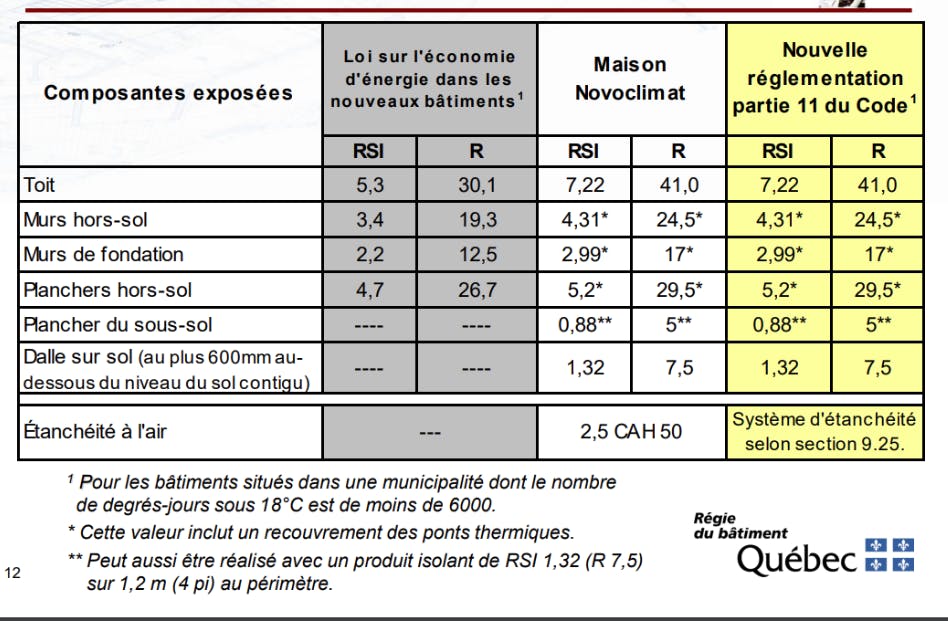Performance building
Passive House, the fundamentals of high-performance building
Born in Germany, Passive House Standards are the most advanced construction standards when it comes to building efficiency
Jan. 28, 2021
6 min read
Performance building
Each material chosen as a component of a building has a Thermal Resistance value, or an “R-value”...
May. 24, 2022
5 min read
Each material chosen as a component of a building has a Thermal Resistance value, or an “R-value”. The resistivity value expresses the performance of that specific material to resist the change in temperature, in other words, it expresses how long it would take the inside temperature to travel outside through that material.
When we consider the Thermal Resistance of a house, for example, we have to consider that walls, roof, foundation and floor are composed of a group of different materials, and that their summed R-values and the area they cover will result in the total Thermal Resistance of the specific building structure.
As seen on Table 1, the Code of Quebec requirements for new buildings have been improving over the years, and in terms of Thermal Performance the requirements are currently R-41 for Roof, R-24.5 for above-ground walls, R-17 for foundation walls, R-29.5 for above ground floors and R-5 for below ground floors.

Table 1: R-value requirements by the Code
R-Nominal x R-Effective
The Thermal Resistance value given by each supplier, or the average recommended R-value found on building literature are nominal values, in other words, it is the value the material is expected to perform. However, under different conditions depending on the other components of the structure and also where it is applied, as seen on Figure 1, its performance may change significantly, and this difference in performance is called R-effective.

Figure 1: R-values according to building structure
As stated in the previous Post “What are the R-values?”, each material chosen to be part of a building structure has its own Thermal Resistance (R-value), or their R-Nominal value, and their sum will result in the total resistance of a given assembly, the R-Effective of the structure.
Online softwares and calculators that can provide an estimate on the R-value of a given assembly based on the components selected, such as Ubakus*. However, for simple structures with repetitive patterns, a hand calculation could be easily performed.
In order to calculate the total resistance of a building structure, we require two elementary pieces of information,
For the R-value average of different materials use table 1 as reference, unless you have the supplier's exact R-value for the material used:

Table 1: Recommended R-values for different materials by Passive House Canada
In order to calculate the R-value for the assembly, a cut is made and its components should be considered as shown on Figure 1. Two sections were selected based on their repeated pattern throughout the wall assembly, being Section 1 mostly of insulation and Section 2, of the wooden studs. Both selections take into consideration only the thermal region of the wall, or the envelope, excluding the internal and external finishings and air gaps, even though some methodologies may take them into consideration.

Figure 1: Wall composition divided in two main thermal sections from Ubakus
To calculate the R-effective of the assembly, we first calculate the thermal resistivity of each section separately and then calculate their weighted impact on the final result, based on the area they cover.
To start, list the layers within the thermal region, their thickness, the thermal resistivity(R) of the material per inch, from Table 1, and then just multiply the thickness used by the R of the material. At the end, sum up the components' R-values and you will have the total R for that given section, as shown on Tables 2 & 3. Membranes were not considered in this example, following Passive House PHPP methodology.

Table 2: Section 1 - Total R value

Table 3: Section 2 - Total R value
The Total Area of each section must be calculated in order to have a weighted R-effective of the assembly as a result, as shown on Table 4. The final Thermal Resistance is calculated based on the formula.

where the Resistance is equal to the Total Area, divided by the sum of the Areas of Sections 1 & 2 divided by their respective Thermal Resistances. See Table 5 for details.
See example of the calculation below.

Based on our hand calculation, our assembly is R-64.8, and with the online software Ubakus, the result is slightly higher, R-65,7 mainly due to the fact that Ubakus takes into account the resistivity of the membranes.
An important note is that on site building skills are of paramount importance to ensure the final effective R is met as planned, avoiding unnecessary thermal bridges that could risk the efficiency of the thermal envelope..
There are two main strategies that could improve the total resistivity of our structure: